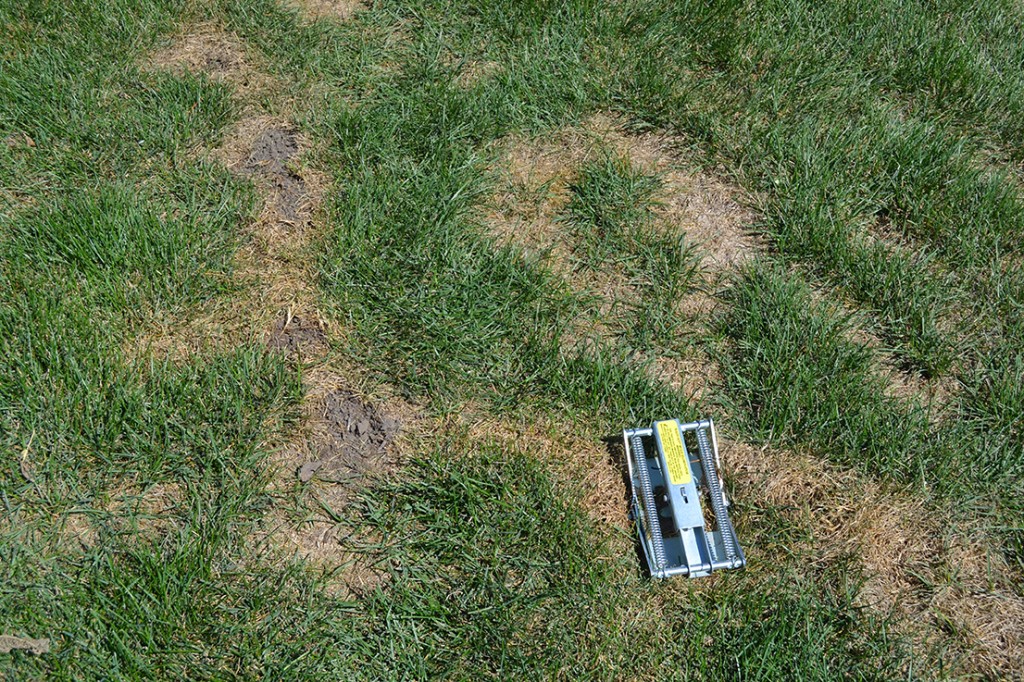Turf damage caused by moles can be severe. Chances are that most of you have seen turf damage caused by moles in one form or another. Walking through a mole damaged lawn can be an ankle turner to say the least. For as small as this creature is, it can sure create quite a bit of damage in a short period of time. In our line of work we encounter quite a few lawns that have visible mole damage. Mole damage is often confused with damage caused by other creatures. Understanding how this animal survives and what its habits are, will help you properly identify your critter and formulate a plan of action to control it. Turf damage caused by moles can get out of control quickly if the mole is not dealt with.
Turf damage caused by moles.
If you have spent any great length of time looking for products that will control moles or remove them from your property, you have probably experienced some frustration along the way. When you go down to your local hardware store and ask the sales clerk what can I do to get rid of moles, you are probably told to buy this product or that. There are many gimmicks and so called “mole eliminator” products on the market today. Everything from caster oil to chewing gum to noise generators will promise to do the trick. Thousands of these products are sold each year to unknowing consumers who rely on these products to get rid of moles. Once these products are put to the test, they fail with flying colors.
Many uninformed lawn care providers will try to sell you on a grub control application to remove “the moles food source” from the ground, in essence driving the mole away by starving them. First of all, it is important to note that over 80% of a moles diet consists of mainly earth worms. With that being said, it is relatively impossible to starve a mole by removing less than 20% of its diet. If you remove grubs from a moles diet, all they have to do is eat more earthworms and other insects.

